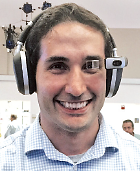The Global Promise of Wearable Technology in Children’s Mental Health
Abstract

A digital revolution is coming to mental health, having already established a foothold in business, education, and other areas in health care. This revolution is, however, not led by angry citizens, but is fueled by the rapid emergence of “exponential technologies.” Exponential technologies are those that are growing swiftly in power and availability and are opening up entirely novel fields. These technologies have immense potential to disruptively change how we live our lives and how we manage our health. Exponential technologies include “wearable” sensors, artificial intelligence (AI), robotics (including drones), synthetic biology, 3-D printing (including the printing of body parts), and human-computer interfaces.
We may already have exponential technology in our pockets—even basic smartphones contain considerable computing power and integrate the functionality of many other historically separate devices. We are on the cusp of an explosion in the number of people using wearables, interactive digital devices that can monitor our behavior and physiology. There are many examples of wearables, including smartwatches (for example, Apple watch), smartglasses (for example, Google glass), and activity trackers (for example, Fitbit).
When we assess children’s mental health, we often consider their sleep, appetite, activity level, and relationships with others. These are all areas where wearable sensor-rich devices can collect data and, in some cases, potentially offer some type of intervention. In order for the data to be useful, it must lead to actionable change. The data must give us insights into a child’s functioning and must therefore undergo an analytic process. Historically, data analysis was largely a human task, but the development of predictive algorithms in many industries has largely automated data analytics. These analytic algorithms are not based on a single person but on subtle associations that are discovered from the analysis of thousands of individuals.
In the United States, wearable devices, in addition to other exponential technologies, are already transforming people from passive health-seeking patients to actively engaged health care consumers. These consumers use technology to generate data, monitor their chronic health conditions, and shape the health care systems of the future. There is immense potential for these technologies to create mental health solutions that can overcome geographic boundaries and create global solutions.
How can wearable technologies transform pediatric mental health?
Quantitative Data
Most of our information about a child comes from a combination of parental reports, a clinician’s observation, and collateral information. Most of this information is subjective, and reliability may vary a great deal. We often ask parents to give us feedback regarding how a child has been doing for the preceding week, month, or more. This is not an easy task; we are asking a parent to be an objective human data collector, complier, analyzer, and reporter. We should therefore not be surprised if the “recency effect” (people recall the most recent events best) leads to bias. Wearable technologies can objectively and quantitatively monitor many aspects of a child’s behavior, sleep patterns, arousal levels, and other physiologic markers. The data that these devices collect can be used to inform the clinician and, with the development of appropriate analytic tools, help monitor and guide treatment.
Scalable and Affordable Solutions
Worldwide, there are considerable mental health challenges, and many communities are highly under resourced. Children’s mental health is an area of extreme need, with a substantial lack of trained clinicians. Technology has the potential to be a scalable solution, allowing for a digital means not only of communication, but also to help with assessment, treatment, and monitoring. New technology almost always is expensive, at least initially, putting it out of reach of many potential users. One of the common attributes of exponential technology is rapidly falling prices, especially per unit of performance/power. Training a mental health clinician may take months or years, while learning to use a wearable may take only a few hours, and downloading an app may take only a few minutes. There are already a number of companies who are leveraging technological solutions to deliver health care and education to the most disadvantaged parts of the world.
Monitoring in Normative Environments
Children spend most of their time at home or in educational settings. Many health care systems assess the mental health needs of children outside these settings, only seeing children during “snapshot” assessments. Good clinicians routinely use collateral history sources, for example, parental and teachers’ reports, to understand the broader picture. Wearable devices can, by virtue of their portability, quantitatively and continuously monitor children 24 hours a day. Such data can be summarized in reports such as activity monitoring, physiologic markers of stress, sleep quality and quantity, attention, and concentration. These reports may offer a supplemental, yet powerful, means of understanding how the child is functioning in different settings.
The Future
We still are a number of years away from this vision of a digitally guided mental health future, but it is coming. However, barriers exist. Firstly, our understanding of the physiologic/behavioral correlates of children’s mental health problems is poor. Secondly, the cost of these technologies is at present prohibitive for many people. The globalization of these technologies can only happen if the cost for use and maintenance is affordable across geographic boundaries. Another barrier is the lack of children’s mental health content experts to help build such tools. Additionally, the mental health needs of children are rarely prioritized for innovative projects compared with other aspects of health care. We need politicians, health care leaders, and businesses, including technology companies, to realize the enormous benefit to be gained. ■
Reprinted with permission from June 2015 41st Bulletin of the International Association for Child and Adolescent Psychiatry and Allied Professions.



